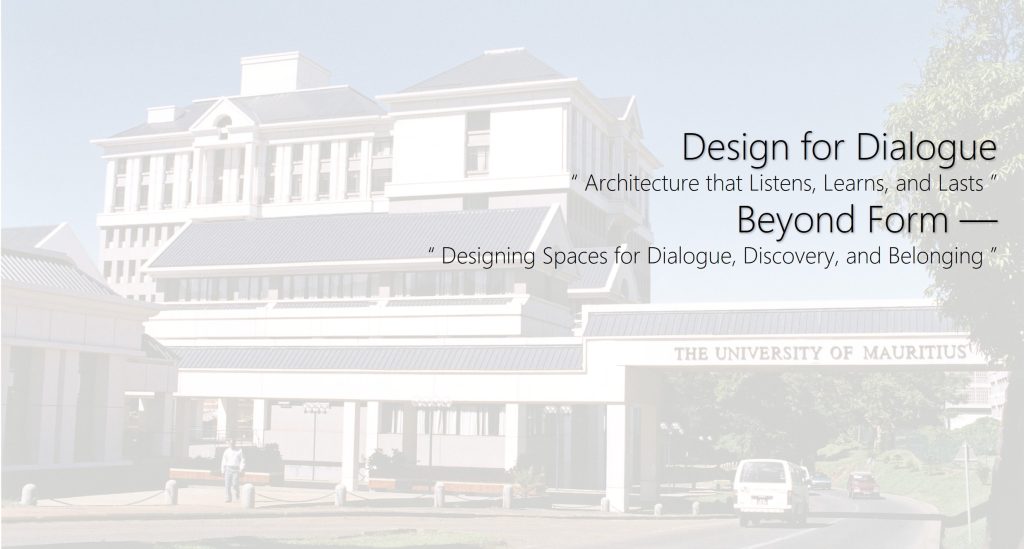Problem Solving and Innovation are collaborative efforts requiring a multi-disciplinary approach. Issues need to be addressed in a holistic manner and education needs to prepare young minds to deal with the complexities that arise from such a process.
Specialized knowledge while being an essential part of the learning process can be an effective tool only through collaborative efforts of specialists in the quest for inclusive and sustainable solutions. Therefore the future lies in teamwork rather than in enlightened acts of individuals. Cooperation, not competition, is the key and educational campuses should reflect this quality by avoiding a top – down hierarchical structure emphasizing power centres within the organization.
Campuses should be free of psychological barriers and territorial definitions where ideas can flow as freely and seamlessly as the spaces its creators (teachers, students and administrators) inhabit.
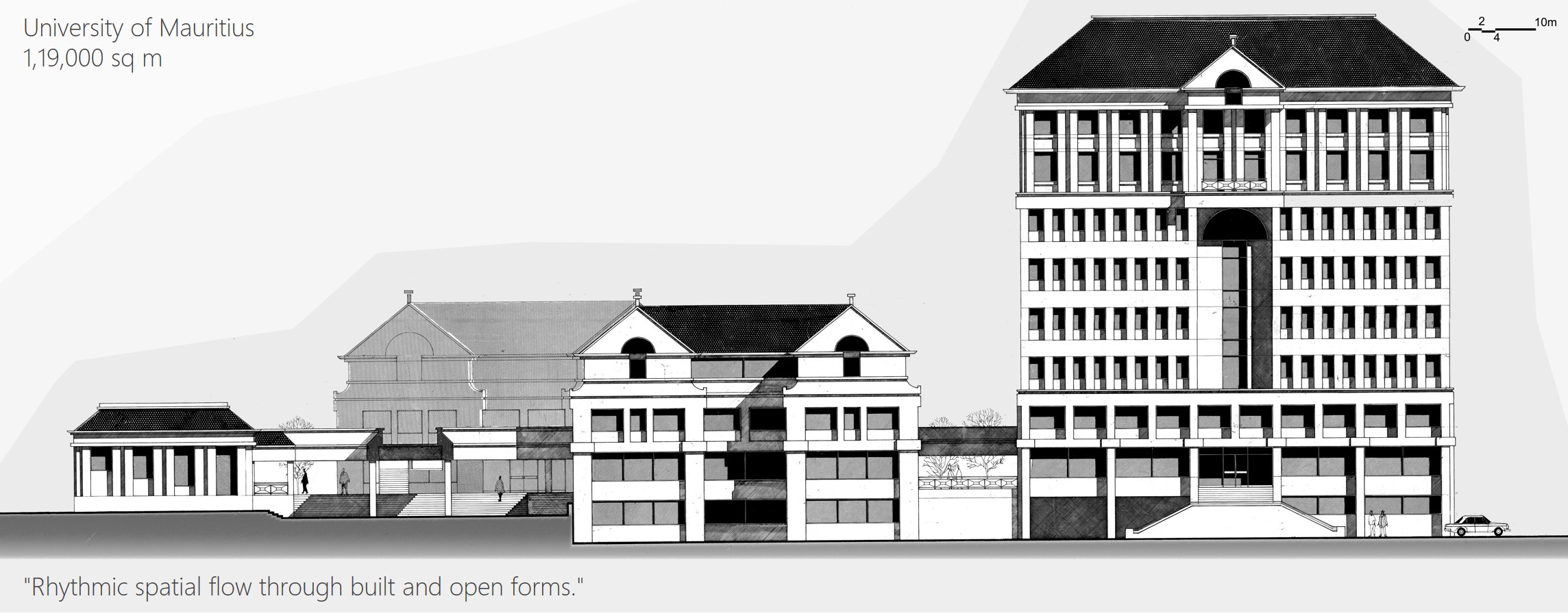
Our work attempts to capture these qualities in the form of clusters of built spaces grouped around courtyards and pedestrian spines that allow open spaces to evolve out of a human scale rather than follow the dictates of motor vehicles or preconceived aesthetic forms which divide and alienate rather than unite communities.
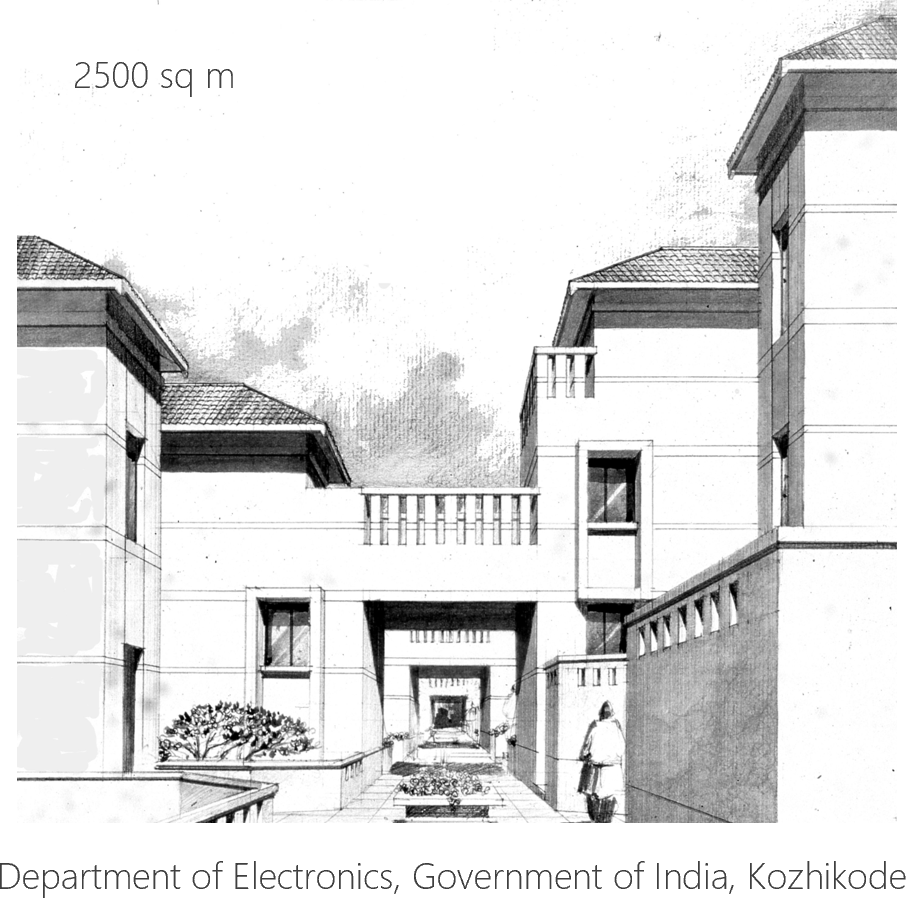
The role of the motor vehicle cannot be denied, but it is given due recognition as a service function within the campus. Entry of vehicles into clusters is restricted to emergencies and maintenance needs.
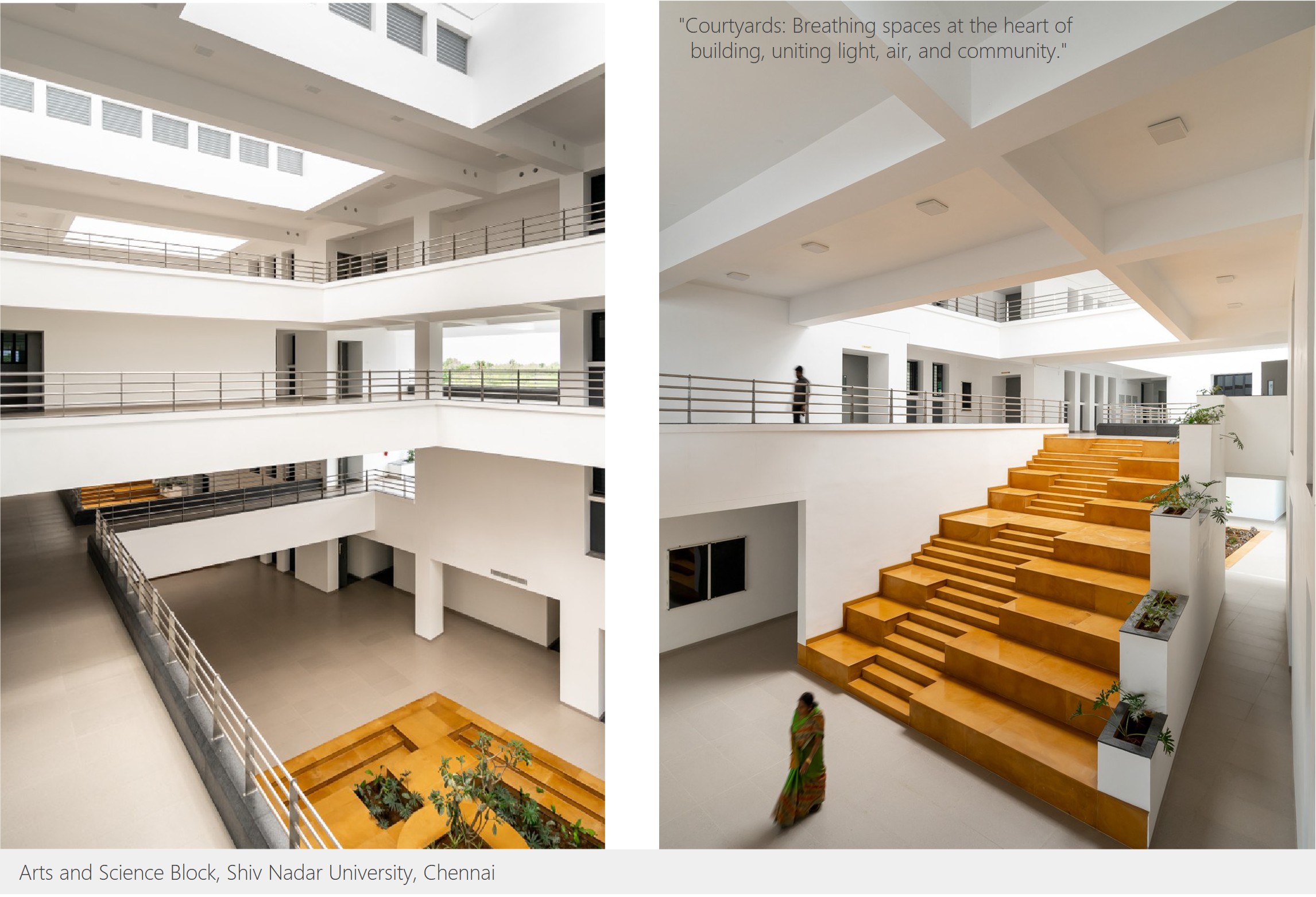
It is often said that it is not water that generates life, but it is the way in which it flows over the earth’s surface that creates and moulds life in all its various forms. Similarly life on campus is shaped and moulded by the way activities are grouped together.
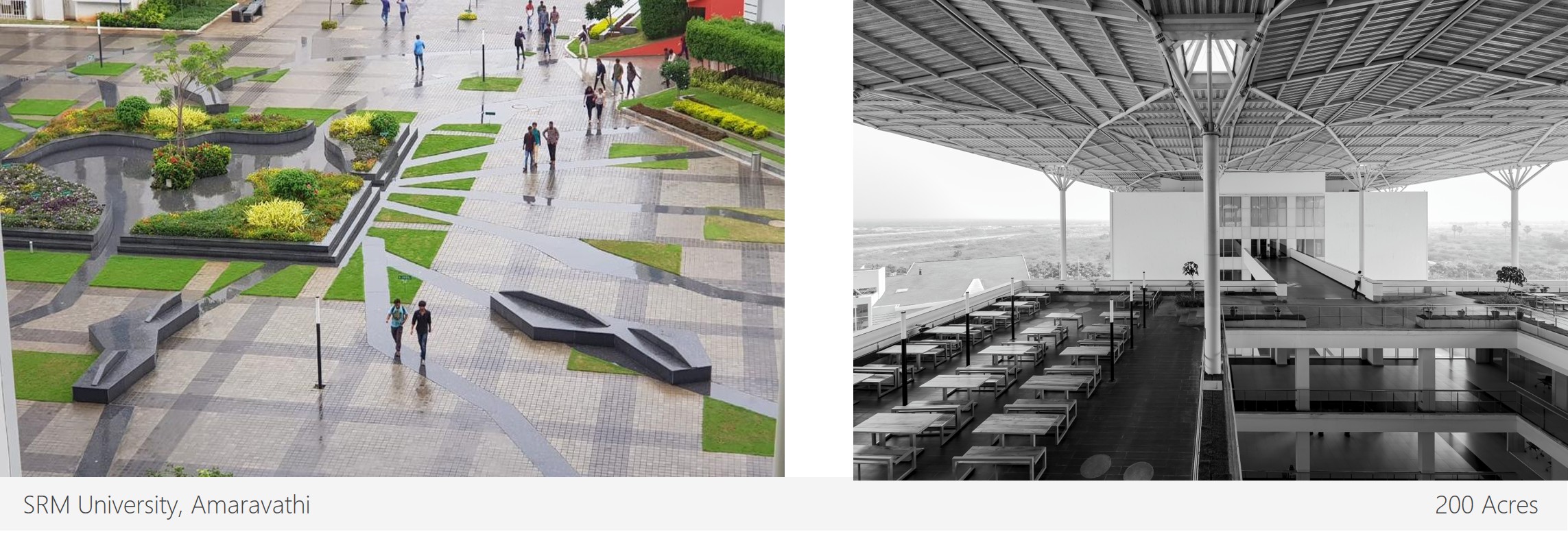
Some campuses are known to reflect the power of authority. In others security concerns or administrative convenience may dominate, each shaping the aesthetics of the campus and influencing behaviour. Instead, if one were to subscribe to the idea that social discourse and spontaneous expression are as important as programmed learning, then it would lead one to interesting groupings where libraries, cafes, bookshops and seminar halls can all rub shoulders in a central core, creating the ambience of a lively town square or a ‘market’ of ideas.

Institutions grow with time and technology makes new demands on available facilities. Therefore, a campus plan cannot be conceived as an end state design, but should be a dynamic system that is expandable and upgradeable which will, at all times during its life cycle, appear aesthetically whole similar in character to a landscape where plants grow, multiply and mature together without appearing to be a work in progress.
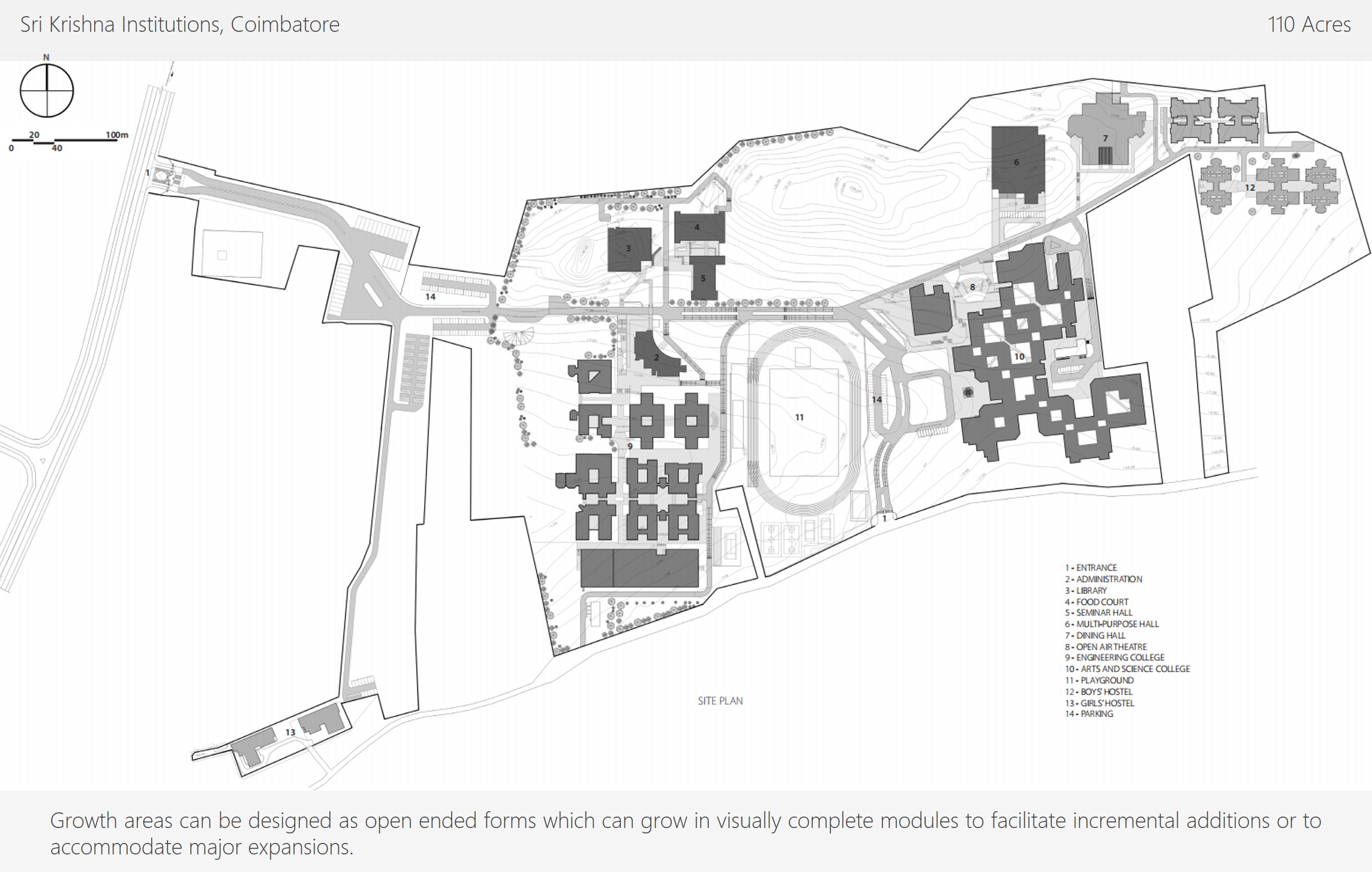
In this manner campuses designed by us have continued to maintain their aesthetic and planning integrity even after two decades without having to make any compromises on the longterm projections of institutions.
Education and culture are interdependent. Important educational buildings which respond to thisrelationship are able to connect with the community at large making them icons of aspiration.
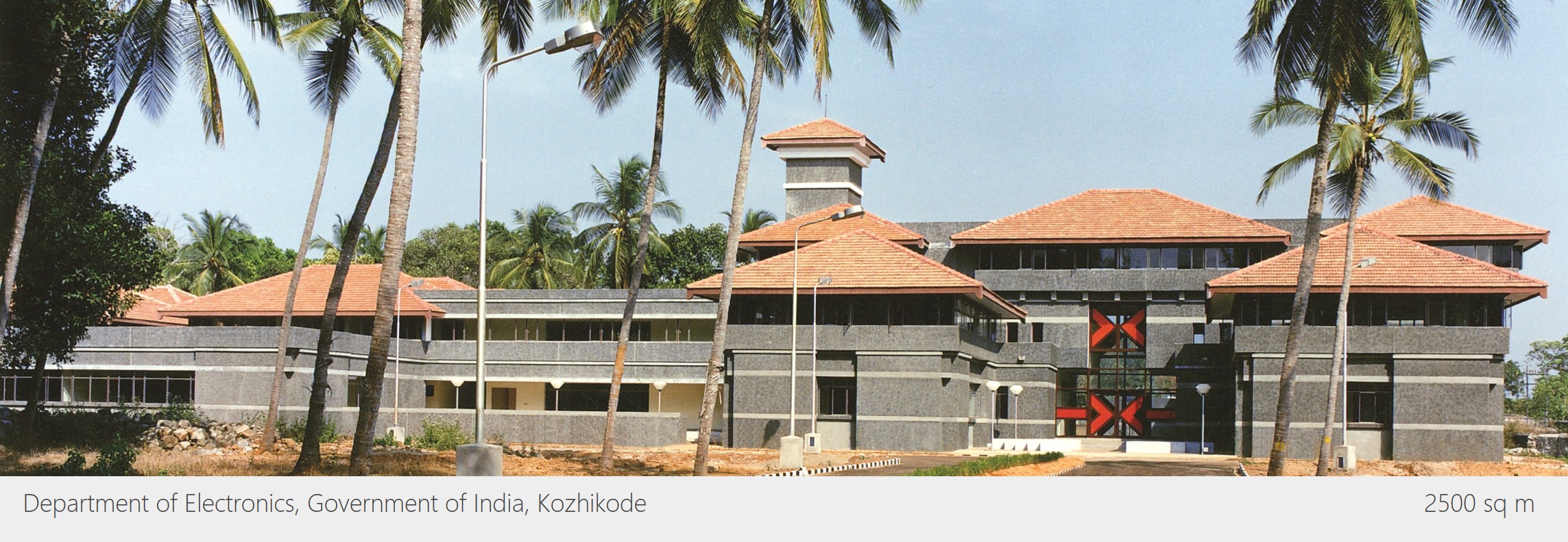
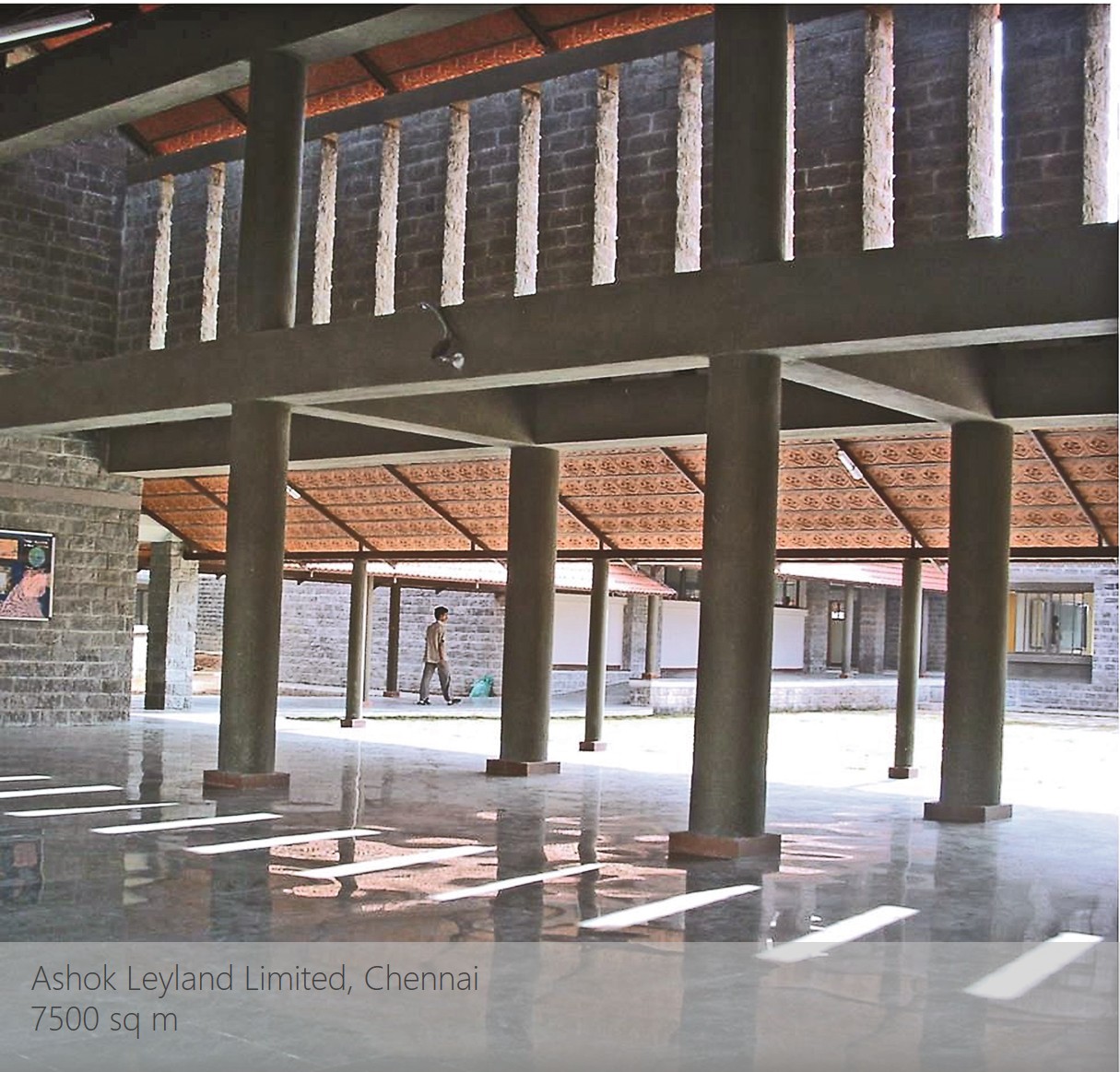
The objective of design is to seek continuity with the past without denying the influences of the present and to respond positively to geographical factors.
Buildings devoid of contextual references end up like lost souls – everyone knows that they are there, but no one bothers!

